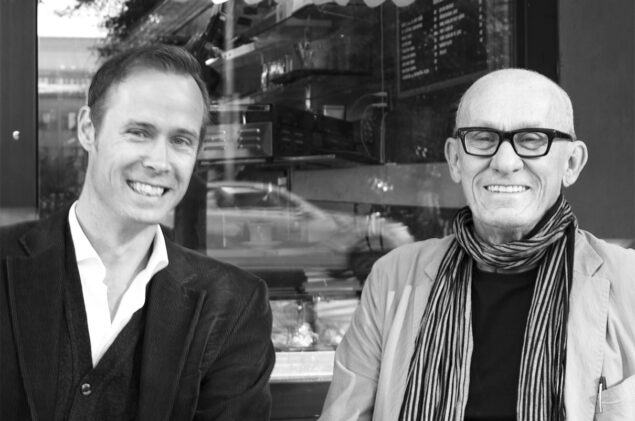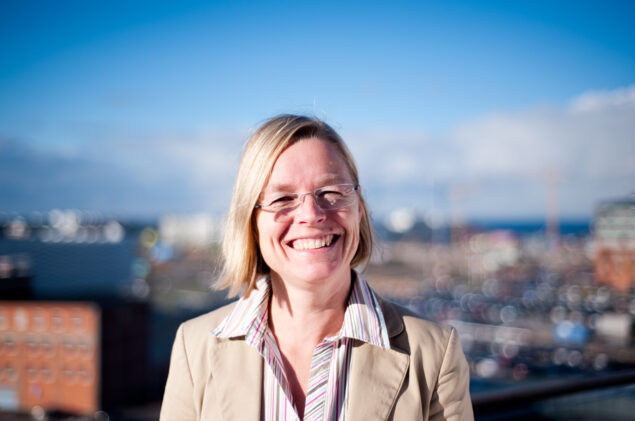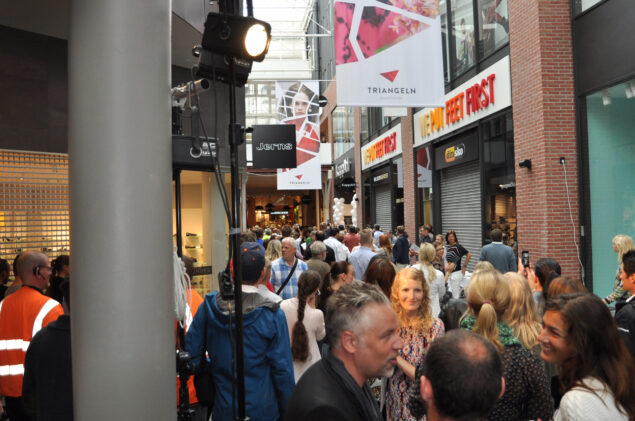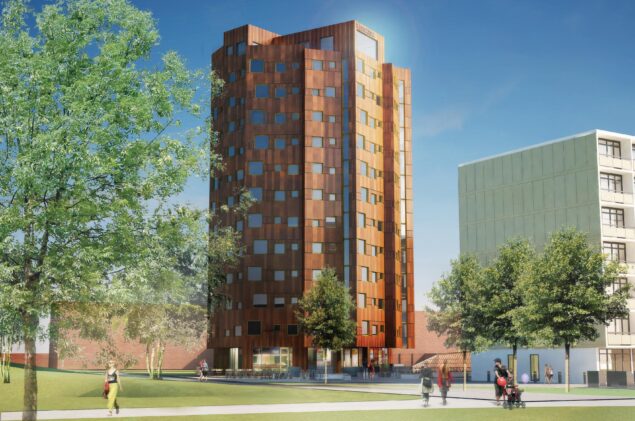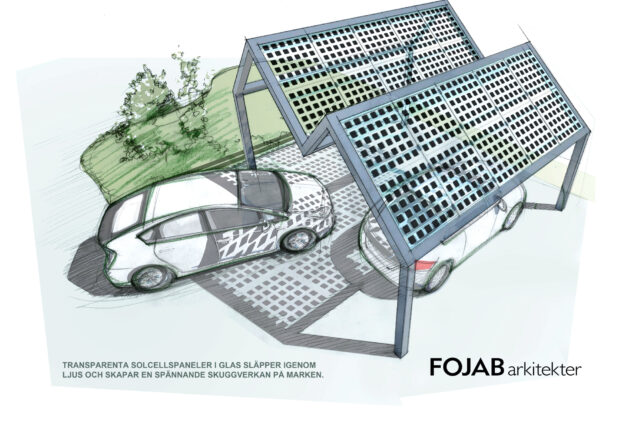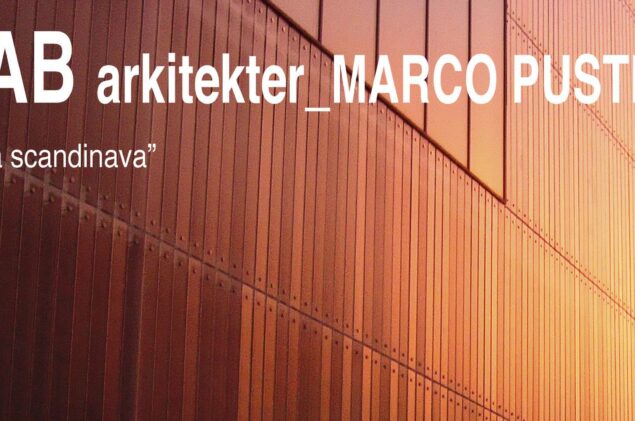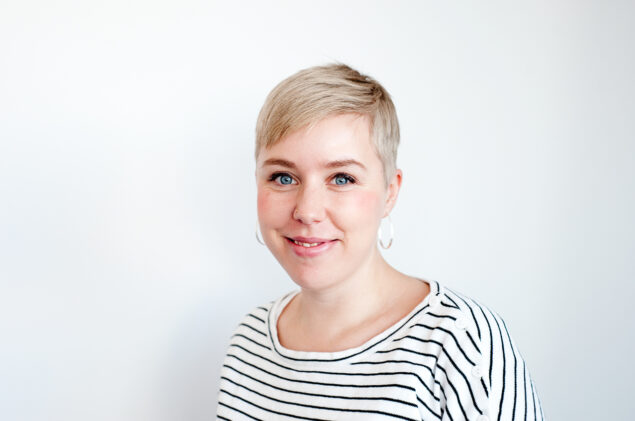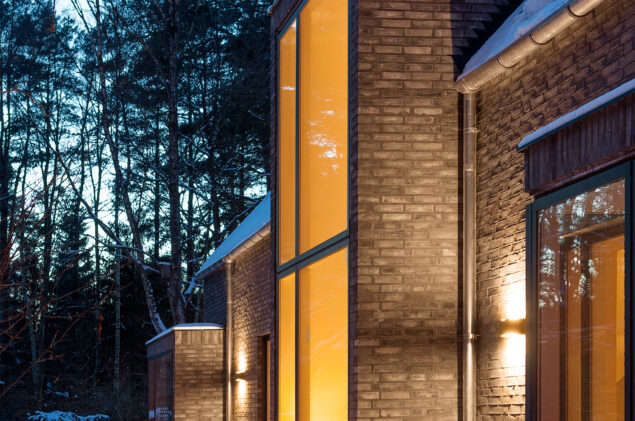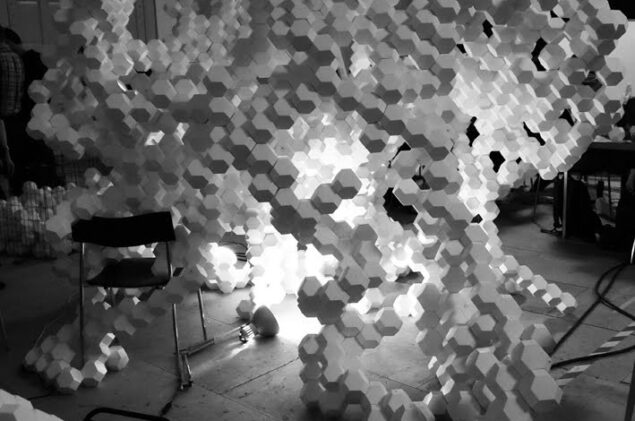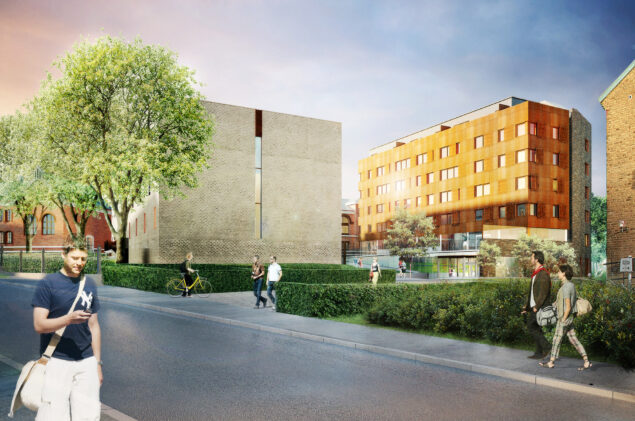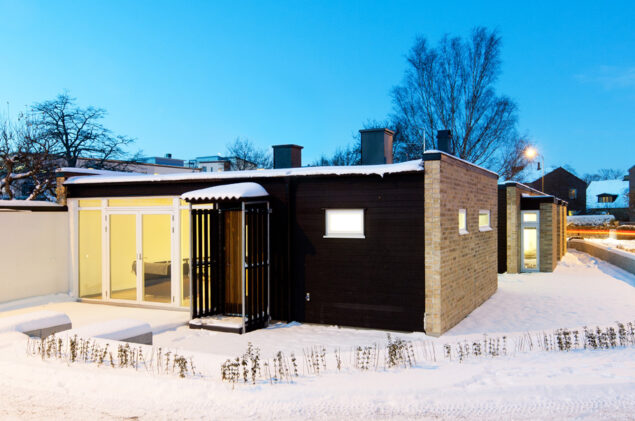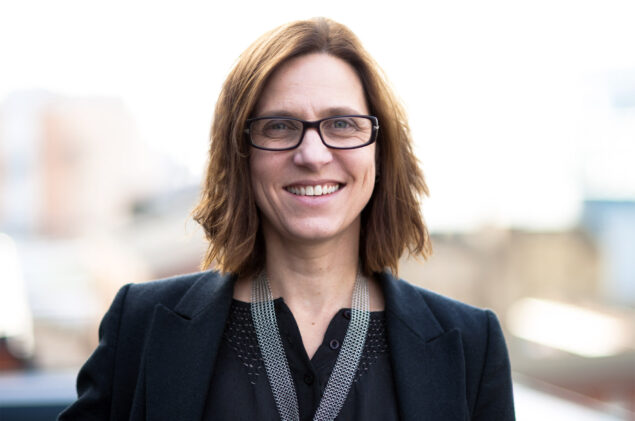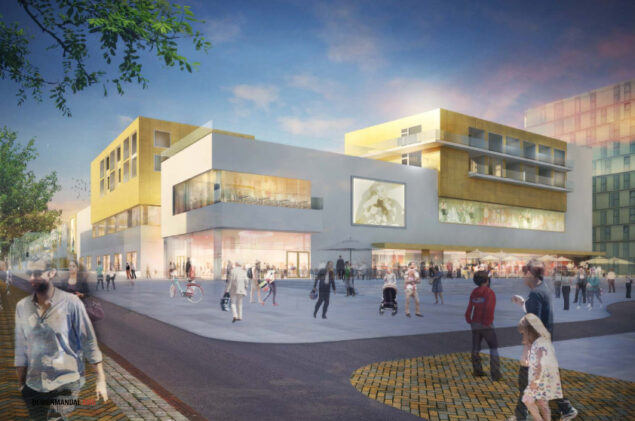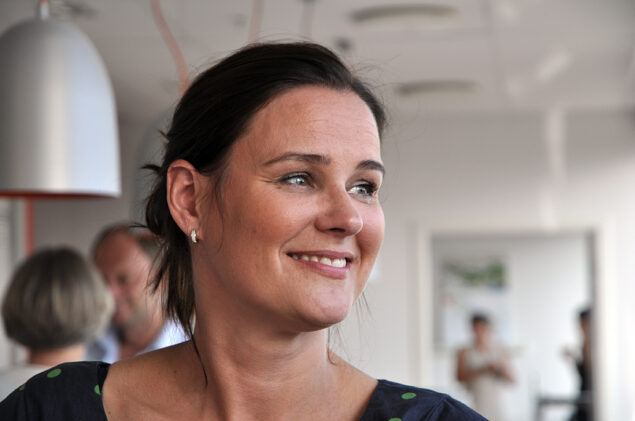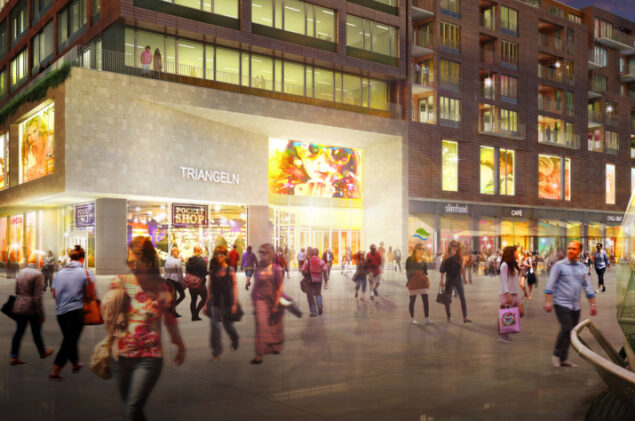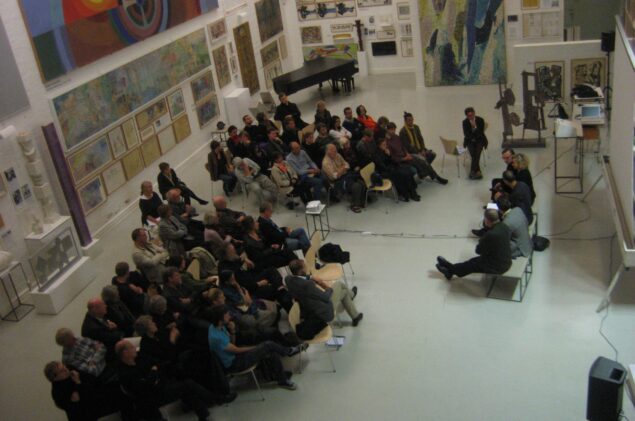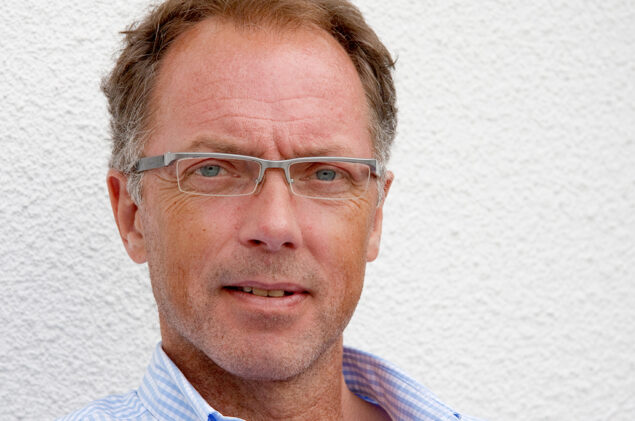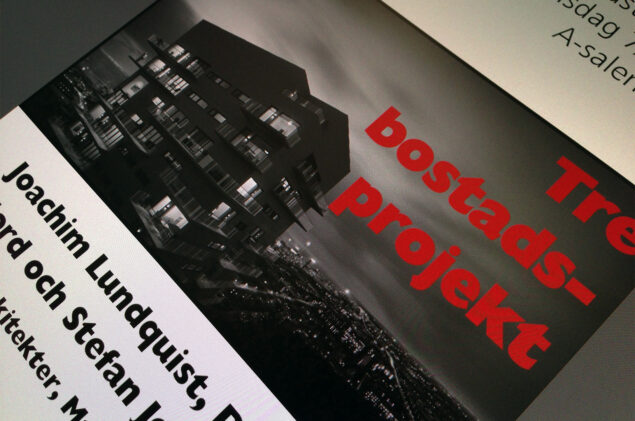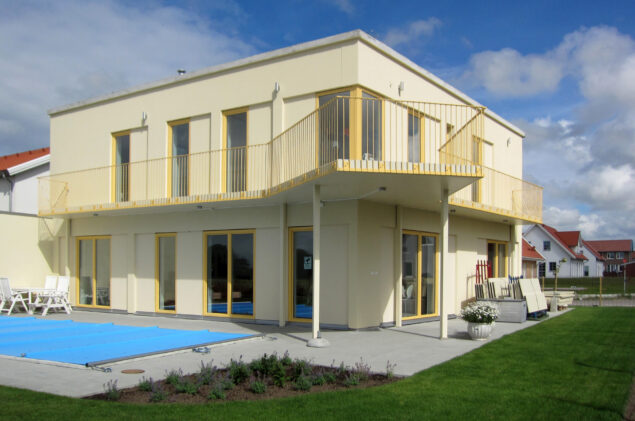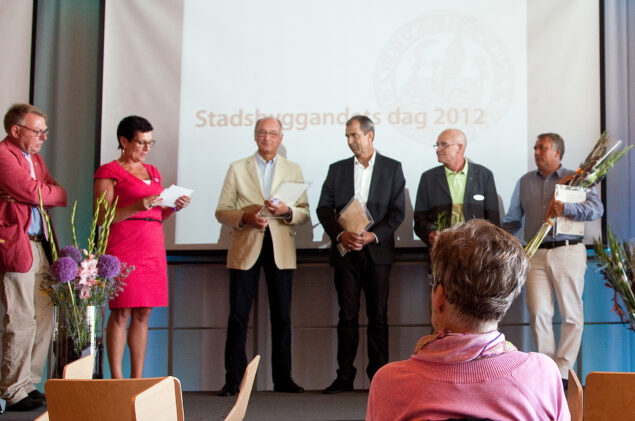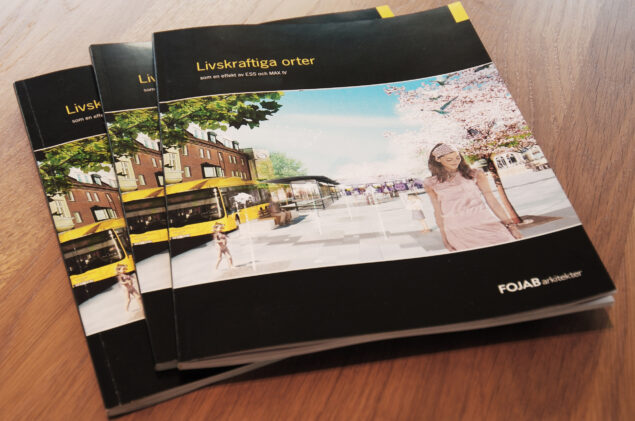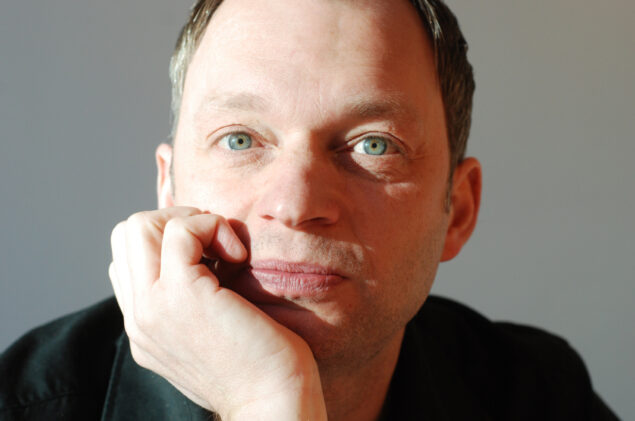2013-09-03
FOJAB opens office in Stockholm
One of Sweden's largest architecture firms, Malmö-based FOJAB arkitekter, is now opening an office in Stockholm. It will be led by Robert Lavelid and Johan Paju.
- With our 100 employees and many exciting projects, we are big on the regional scene in southern Sweden. It therefore feels like a natural step for us to establish ourselves in Stockholm, which is a dynamic market," says Cecilia Pering, CEO of FOJAB arkitekter. "We want to collaborate with talented individuals who strengthen our common brand. Therefore, it feels extra fun to build the business with Robert Lavelid and Johan Paju, who both have a high architectural profile and a culture that matches our own.
Robert Lavelid comes from Tengbom, where he was responsible for the business area architecture. Johan Paju has run Paju Architecture and Landscape and is one of Sweden's most renowned landscape architects.
2013-07-05
Working actively with glass and sun protection
The sun beams in through the adjacent window as Helena Bülow-Hübe, PhD and Head of Environment and Energy at FOJAB arkitekter, talks enthusiastically about her area of expertise - daylight, solar heating and glass in facades. She talks about the great opportunities for development and improvement, both economically, technically and aesthetically. But according to Helena, a change in attitude is required to get there.
- We need a more active approach to these issues. It is common to write a general U-value requirement for windows. It then applies to all facade surfaces, regardless of the direction of the wind, sun/shade conditions and room function. In line with this, the same solar control glass is chosen for the entire facade and usually the entire building. Nevertheless, there may only be a small part of the facade that is unshielded and has a large passenger load, for example with a conference room behind it. But that situation still becomes the design basis for the whole building.
Sunscreen glass is used indiscriminately
- Technical performance facts are often discussed in the design process. The ventilation consultant calculates a g-value, solar transmission, for the glass. This is then written into the documents as a general requirement for the building's windows, perhaps at a stage when it is difficult to see the consequences. What will be the technical performance? What is the impact of this requirement on the aesthetics of the façade and the availability of daylight indoors?
We discuss the importance of taking a holistic approach and using solar shading intelligently. Helena Bülow-Hübe says that solar control glass is often used carelessly. This can result in facades that give a dark and sad, even rejecting impression and she highlights a concrete example: "An office building was designed with a glazed entrance with a reception behind it on the ground floor. The intention was of course to give an inviting and welcoming impression. But the same effective solar control glass had been used throughout the building, and the result was that visitors only saw their own reflection when approaching the entrance.
- This can unfortunately also be seen in commercial contexts, with shop windows that reflect more than they provide daytime visibility, and thus do not serve their purpose, says Helena. The solution lies in working with sun protection and the choice of glass in a differentiated way. Different conditions in different parts of the facade may result in varied solutions. You do not have to meet the higher technical requirement where it is not needed and thus have the opportunity to bring in daylight. This allows the glass to have the transparency that was intended.
There is much to gain
- Where the load is high, choose a suitable surface-mounted sunscreen. This can be blinds or fabrics. In one project we used insulated sliding window shutters with great success. This makes it possible to choose a clearer glass that lets in daylight, which also reduces the need for artificial lighting during the day.
- Sometimes you want both internal and external sun protection. The interior can be used in winter to take advantage of the solar heat gain. In some situations, the internal sun protection is also needed as glare protection because the external sun protection is not really sufficient.
Working in a differentiated way with glass and sun protection in the facade means a design challenge and the possibility of more elements to play with. FOJAB arkitekter has the expertise to work in this way, both with technical analysis and design. There is much to gain in terms of comfort, energy and aesthetics. And hand on heart - who is really interested in paying for product features that have no function?
2013-07-01
Welcome to a breakfast seminar on RUDA
FOJAB arkitekter and Tyréns AB offer a new, efficient way to work with room-related information in design. While enjoying a delicious Raw Food breakfast, we present RUDA, a web-based tool for producing room function programs, room descriptions or interior design lists. You will learn about functions, possibilities and also applications in a current reference project.
The seminar is aimed at architects, interior designers, developers, project managers and all others who work with RFP and room cards. If you work in a BIM environment, there are direct links to Revit®.
Welcome to FOJAB arkitekter on Thursday, September 19!
Breakfast is served from 8.00
The seminar runs from 8.30 to 9.30
Address: Hallenborgs Gata 1A, Malmö
Registration is no later than September 12 to nina.pikulik@tyrens.se
Read more about RUDA basic (free) and RUDA pro at http://www.rudawebb.se.
2013-06-13
New Triangle mall opened
The lower level of the new Triangle Gallery was opened in a festive atmosphere. Stakeholders and curious customers mingled and had breakfast.
See the pictures from a unique and colorful mall, signed FOJAB. Anything but plain.
2013-06-03
Student housing for Helsingkrona Nation
The Helsingkrona Nation has received a building permit for its plans to build a 13-storey student accommodation building by the lake Sjön in Lund. Around 140 students will live in the new building, which is located a stone's throw from the nation's existing housing.
A prerequisite for the construction of a new building on this site was that the building should be a strong, independent volume. A new sculpture in the LTH Park that would stand out from the existing rectangular buildings. The building rights in the zoning plan were to be completely round, which placed demands on the layout and design of the building.
- Finding a functional floor plan that is based on the conditions of the round house and at the same time provides good and space-efficient floor plans has been the project's key issue. Add to this the requirement for rational and cost-effective production and you begin to understand the complexity of the project," explains Mattias Hedberg Ek, the responsible architect.
The house is not completely round. Instead, each floor is divided into six almost identical pieces of cake. Each piece of cake becomes a buddy apartment where two students have their own bedroom, but share a kitchen, toilet and a small living room.
- "The round shape has actually been very good for the buddy apartments because you can fit a shared and very bright living room between the two bedrooms," says Mattias Hedberg Ek.
In addition to housing, the building will also have common and more public premises both on the ground floor and at the top, where a meeting room with a view of central Lund will be the icing on the cake. In addition to Lund, you will be able to see Malmö, the bridge and all of Copenhagen on a sunny day.
2013-05-28
New solar car park inaugurated
Sunday June 2 saw the opening of Malmö's first solar car park, where motorists can charge their electric cars using energy from the sun. The inauguration took place in connection with the finish of the Oresund Electric Car Rally, the world's largest electric car rally through two countries. The solar car park is a joint initiative from FOJAB arkitekter, Parkering Malmö and the City of Malmö, and is located at the beach parking lot at Scaniaparken in Malmö's climate-smart district Västra Hamnen.
- "We are pleased to be able to make it easier for Malmö residents to make climate-smart choices such as choosing an electric car, thereby contributing to cleaner air and less noise," says Anders Eriksson, who is in charge of the project at FOJAB arkitekter:
- For FOJAB arkitekter, sustainable urban development is a matter of course, and with projects like the solar cell parking, we are making a difference together with the City of Malmö and Parkering Malmö.
FOJAB arkitekter also has other commitments in Västra Hamnen. Among other things, the company has designed parking garage Fullriggarenwhich has a clear environmental profile with its photovoltaic facade, green wall and birdhouses.
Free charging around the clock
The solar car park, which can accommodate two cars, is a steel structure with south-facing solar panels in transparent glass. Charging will work around the clock and is free of charge, with motorists only paying a parking fee. The power output is estimated at around 2600 kWh/year, which is enough to drive an electric car for around 2000 miles. A gasoline-powered car emits about two tons of carbon dioxide over the same distance.
The inauguration took place in connection with the finish of the Oresund Electric Car Rally, the world's largest electric car rally through two countries, with some 60 participating vehicles. Among the participants is famous rally map reader Tina Thörner. Inaugural speeches will be given by Mayor Karolina Skog (MP) and Tomas Strandberg, CEO of Parkering Malmö.
2013-05-21
Marco Pusterla guest lectures in Italy
Architect Marco Pusterla is giving a guest lecture this week at the University of Piacenza.
- I will talk about how we at FOJAB arkitekter work with sustainability in buildings and urban development. I think it's important to make the issue concrete. Therefore, I will show current projects, including Lomma harbor and center, and Aspedalen in Lerum, a project that won 1st prize in the European competition.
2013-03-26
In the mind of a book reviewer
Everyone talks about having the customer's perspective at the center. But how do you do that when you are building a house and many people are involved? Some who know are the Bogranskarna, who review and analyze a number of homes every year.
Why do you only talk about skirting boards?
Architect Ida Stavenow not only designs homes at FOJAB. She is also one of six "Bogranskare" who give their opinion on newly produced homes in Sydsvenskan. How does it work and what goes on in the mind of a Bogranskare?
- We make 4-5 trips per year, looking at two sites at a time. The group consists of a landscape architect, an energy consultant and four architects. Two of the architects are linked to academia and the other two work in architectural offices. I have been involved for three years now.
- We look at both apartment buildings and typical villas, and we look at objects ready for anyone to move into, not specially designed homes. The key question we ask ourselves is "Is this a good home?" from the perspective of the ordinary housing consumer. So it's not just about architectural qualities but also other things like material finishes, energy issues, workmanship, etc.
- Because of this mix, my architectural colleagues are sometimes skeptical that there is not enough focus on architecture. Why do you only talk about skirting boards?
Ida Stavenow explains how the discussion can, for example, be about upper cabinets that are placed like dust collectors in the middle of a wall, even though they could have been better integrated into the room. Something that can be perceived as a trivial discussion about a lack of attention to detail can reveal something more fundamental in architecture: that you have not succeeded in creating a whole, a beautiful room where the light flows and which is perhaps part of a good spatial relationship.
- The quality of housing in Sweden is generally very high and has also increased in recent years. There are fine materials, spacious and accessible, good appliances, low-flow taps, fully tiled bathrooms. There is very little that is very bad, but there is also not much that is very good.
The country just right
- Many people think that we are a bit lame in our criticism, everything gets a three. But that's because the vast majority of things are very reasonable - and unfortunately the same. This is an issue that is discussed a lot in the group, and we ask for new thinking. As architects, we also have a responsibility to show alternative solutions.
Most people have an idea of what to expect from a newly built home; they want an oak parquet floor, because it's fresh and uniform, and a white kitchen and open plan, because they've seen it in different contexts. But you don't know what you could get and there aren't really any alternatives because the market is so uniform.
- You can't produce something that nobody wants, and nobody wants something they don't know about. This is why we need brave souls in housing production who dare to invest in different qualities to get the ball rolling. The archaeologists also look at the basic idea. What kind of life is lived in this home? It would be great if there was room for different kinds of lives. We are all different!
Sometimes only a doorway is needed
- Quality of life can mean different things to different people. A lot of other basic things can be decided - whether you want children, whether you want a car, where you work, what you eat. But everyone should live in more or less the same way. There is also less and less variety as the old housing stock is phased out. With a culturally mixed population and new family constellations, there should be room for more variety.
Ida Stavenow's thesis was about this. She looked at variations in housing and structures that can give residents greater opportunities to influence themselves. One idea was to design residential areas with smaller individual plots in favor of common areas. The villas would have a basic size that could be expanded over time with extensions within a given framework. Another ideal project was a row of terraced houses with internal connections and a kind of intermediate link that could be flexibly connected to adjacent homes, for example for intergenerational living; when grandma and grandpa can no longer use their upstairs, the neighbor can take it over, and they can continue to live in a slightly smaller area.
- I believe in flexibility over time and a new form of collectivism where the collective is an offer, not a demand. Another example I came across was two single women with children, who every other week opened up and lived a large family life with each other and the children, and every other week closed down and lived a single life. All it takes is a doorway! And a little courage.
Ida Stavenow herself lives in a 3-room apartment with a balcony.
- "We made the architectural choice to move to an ugly house overlooking a nice one," says Ida. The apartment had such qualities, especially the light with large perspective windows over the corners. The floor plan and lighting must be in place from the start, but otherwise a lot can be fixed afterwards if you know what you want. In the kitchen, we removed the dining area and made a really big stainless steel countertop for cooking. It was a way for us to adapt the home to our lifestyle and interests.
2013-03-22
The park of parks in the city of parks
A jubilee in development. Pildammsparken is one of Malmö's favorite places to play. We jog, feed ducks, go to the theater, get married, do gymnastics and picnic. We have been doing this and much more for almost 100 years. 2014 marks the anniversary of the Baltic Exhibition, which was the very reason for the park's creation.
Because of this, the City of Malmö has invited FOJAB arkitekter, as one of three offices, to come up with ideas and proposals on how the park can be renewed and developed.
Architect LAR Sara Schlyter, who worked on the proposal, explains:
- The park is basically a classicist structure with long axes and sight lines that form exciting intersections. One of the park's most central such places is next to Margareta's flower street and is currently used as a parking lot. In our proposal, the parking spaces are moved to a location along the access road. Instead, we create a clearly defined space with water features, magnolia trees, seating walls and a visitor center. Our idea is that it will be experienced as the heart of Pildamm Park. From here you can then move around the main axis of the park on a new footbridge, which leads across the large pond to the water tower.
In contrast to the park's grandiose axes, other places with a more secretive character and surprising experiences are proposed. Sara Schlyter draws a parallel with the Park of Versailles where, if you leave the strict baroque layout, you will find similarly romantic and slightly secluded places.
- For example, the proposal includes a bamboo maze that lands in a tower with a suspension bridge. And a rose pergola that forms a portico to the rose garden from Baltic Road. We also want visitors to have a clearer experience of the water in various ways. Both by getting closer to the pond and through sound and light effects. So our hope is that the anniversary will be the start of a new century of recreation for both Malmö residents and visitors.
2013-03-21
New Triangle
The new part of Triangelgallerian opens in June. Facing south towards Triangeln station, a completely new and colorful mall will open, 12,000 square meters on two levels. Triangeln station is expected to be Sweden's third largest station, and the idea is to create a square for the many people who commute and are on their way. But also for those who want to relax in a pleasant environment that is small-scale, dense and intense.
- Nya Triangeln will be like the new Malmö, neither restrained nor smoothly structured. There should be a sense of urban bazaar, of colors and materials creating a social scene for life and shopping," says Viveca Rosencrantz, design manager at FOJAB arkitekter for the mall.
NCC has high ambitions for Triangeln. The feeling of a square is central - it should simply be nice to just be here. The expansion is on two levels and is connected both to the existing mall, which is being rebuilt and expanded, and to the new sunny facade facing Triangeln station and S:t Johannesplan.
The shops are accessed through portals in three winding aisles at street level to create variety and enhance the urban feel. The central square, which opens up through both floors, is formed by playfully placed shop boxes. The visitor will encounter an abundance of impressions where color and material choices contrast rather than harmonize.
At street level, the feel is darker and more variegated, with patterned granite-ceramic floors, copper-colored ceilings and high-gloss entrance portals, becoming lighter in the open square in the middle and on the upper level.
- To take a position, the brand must be supported by architecture and interior design. So much of the brand's communication is in sound, light and choice of materials. What we wanted to reinforce here is a hustle and bustle, in line with the pulse of the city and Malmö's scenography," says Viveca Rosencrantz.
2013-03-20
Notable single-family house
FOJAB's Marco Pusterla has designed Villa Enestigen in Veberöd, which has been recognized at the Architecture Gala.
"I accompanied Andreas and Vibeke on several house viewings over several years. They never found the house they wanted, but they became more and more aware of their requirements and expectations. They saw a dilapidated summer house in their dream location, a peaceful forest plot not far from Lund and Malmö. I drew up a sketch and after a slow, stress-free planning process with many wonderful discussions, this house was born."
A dark brick façade rests among the trees, allowing the forest atmosphere to dominate the site. Glazed volumes break the simple shape of the long axis and create three unique rooms in the house. There is a consistent choice of quality materials and solutions and a completely inorganic frame. The exterior brick walls are half a meter thick, and the roof is covered with small flat brick tiles. The basement walls as well as the floor are cast-in-place concrete. The ventilation system is integrated into the frame, harnessing solar energy through the building's large openings to the south and the thermal inertia of the materials.
The exterior of the house is virtually maintenance-free, and will age beautifully. Many details have been specially studied in a way that evokes the art of old buildings. Despite its location in the forest, the interior is bright. The softness of the windows brings the glass to life and daylight flows freely into the rooms. The interior lighting is there to enhance the architecture, not to be seen.
The layout is thoughtfully prepared to accompany the different phases of life. Longitudinal and transverse lines of sight and room heights between 2.26 m and 6.5 m add dynamism to the spatial experience.
FACTS:
Architect: Marco Pusterla, FOJAB arkitekter; Lighting: Viveca Rosencrantz FOJAB arkitekter.
Designer: Tomas Gustavsson, T.G. konstruktioner AB
Building contractor: MW Bygg, Södra Sandby.
Plastering contractor: Stuckaturfirman Hans Räthel AB
Developer: Private
Gross area of house: 286 m²
Year of construction: 2011-12
ABOUT THE ARCHITECT:
Marco Pusterla, born in 1975, educated in Milan (degree 2001) and Erasmus at LTH.
Active at FOJAB arkitekter since 2003.
2013-03-20
3d printing - the future of construction production?
FOJAB lab has welcomed Dr. Rupert Soar from Nottingham to give lectures and workshops. It is Petra Jenning at FOJAB, a long-time partner of Rupert Soar, who is behind the event. The focus has been on the contribution of the digital revolution to the development of future architecture and building systems.
- Based on digital manufacturing processes for the construction industry, mainly additive manufacturing (AM), such as 3D printing, Soar explores opportunities for faster information flows, increased complexity and more intelligent buildings. "By studying how processes and structures are built up in nature, we can find new approaches to our built environment and how we relate to it," says Petra Jenning.
Termite stacks and houses
Rupert Soar co-founded the world's leading additive manufacturing research laboratory at Loughborough University. With over 15 years of experience in the field and as an advisor to firms such as Büro Happold and Foster & Partners, he has a deep understanding of AM and its use in the construction process. To look ahead and understand the possibilities of AM, Soar embarked on an unusual journey. By scanning termite stacks in Namibia and studying their complex structure, he realized that they act as membranes that actively move energy in and out of the stack. However, this amazing structure is not built according to a predetermined design but emerges organically. It also adapts to each individual site and its specific conditions.
- Nature often uses fractal structures. To the naked eye, they can appear incredibly complex and difficult to grasp," says Petra Jenning. "They provide a maximized surface as an interface with their surroundings and it is precisely in this surface that energy exchange in the form of gas or heat exchange can take place. "I believe that by understanding the process behind the physical expression of the termite stack, we can learn to design buildings according to the same principles.
Today we generally have a 1:1 relationship between the complexity of the drawing and the complexity of the building. The drawing is a representation of the building in physical space. In the case of the termite stack, it is instead most relevant to describe the functions and processes materialized in the structure. These processes can be described in simple terms, or algorithms, despite the high geometric complexity of the physical expression.
Agent system
The workshop explored how formulating algorithms within an agent system can solve complex problems in new ways. It is a way of thinking that has grown out of Soar and Jennings' longstanding collaboration at the University of Greenwich in London and at Freeform Construction Ltd. An agent system consists of a number of simple modules, or agents, that sense their environment and influence it in real time according to their own objective or algorithm. The agent system negotiates solutions over time that meet a large number of requirements, but without, as in the classical building tradition, dividing each function into a separate material or solution. If, in the future, we can use 3D printers to build houses, today's established relationship between geometric complexity and high cost will change. This opens up the possibility of working with functional form in new and innovative ways.
2013-02-20
Groundbreaking for the National Archives
The first sod is now being turned for the construction of student housing in the Landsarkivet in Lund. FOJAB arkitekter has, on behalf of Lund Nation, designed student housing with the aim of giving the historic building new life.
The Landsarkivet will be home to up to 150 students, making it a welcome addition to the tight housing market in Lund. The project comprises a total of 8,800 square meters of new construction and renovation and consists of four buildings. Two of these were built in 1903. In 1971, the characteristic extension designed by Bernt Nyberg was added. The fourth will be a new five-storey building clad in Corten steel. The homes are planned to be ready for occupancy in the fall semester of 2014.
2013-01-03
Urban development award to Kjell Adamsson
Kjell Adamsson, studio manager and vice president of FOJAB, has been awarded the Lund Urban Design Prize 2012 for an extension to a terraced house on Hökvägen in Lund.
Motivation of the jury:
The 2012 Lund Urban Design Prize is awarded to architect Kjell Adamsson for an extension characterized by sensitive and careful detailing that represents an exemplary densification strategy.
Through a carefully designed extension to a terraced house, which respects the character of the surrounding area, the architect has succeeded in demonstrating how to densify on a small scale. The floor plan of the house, with a new entrance at the back, allows for flexible use of the dwelling, e.g. as an intergenerational home or as a rental room for students. Also in this respect, the extension is exemplary as an example of a sustainable densification strategy on a small scale.
The character of the townhouse in terms of scale and materials has been preserved, and in a beautiful and natural way supplemented by another building in the same spirit as the original house. Great care has been taken with the details, which takes the experience of the building to a new level. The new bay windows bring the facade to life while allowing valuable light into the home.
- "When I saw the house in its original design, I saw the potential. Partly because it is a gabled house with room for an extension, and partly to be able to use the existing atrium in a different way," says Kjell Adamsson, Deputy CEO, FOJAB..
2012-11-05
Architect Karin Fagerberg becomes CCO
FOJAB arkitekter appoints Karin Fagerberg as chief commercial officer. Karin will be part of the management team, and will also be active as a commissioned architect with a focus on urban development, community planning and early stages.
- The focus in my new role will be on customer-driven development work. I work in parallel with both private actors and municipalities as clients. This provides a link between overall planning and interesting construction projects, and provides a leverage effect for the projects. It also creates a development potential that leads forward, into new assignments. It is important for me to work both strategically and operationally," says Karin Fagerberg.
Karin is an architect SAR/MSA and currently office manager at Tengbom in Malmö. She has a past at BM Arkitekter and FOJAB arkitekter, where she was a partner and studio manager. Some of the projects she has worked on are the development of Lomma Hamn, Bara centrum and the new area Elinegård next to Kalkbrottet.
- "I am proud to have Karin back in the team," says CEO Daniel Nord. "With her expertise and wide network of contacts, she will drive the marketing work offensively and with a strong customer focus. "Since we have worked together for several years, I know what an asset Karin will be for the company.
Karin starts her position at FOJAB arkitekter at the turn of the year.
2012-10-24
Groundbreaking for KNG
In early September, the groundbreaking ceremony for Kristianstad Nya Galleria, designed by FOJAB Arkitekter, took place.
The mall is being built on the site of the current Domushuset and is part of the transformation of Kristianstad's city center. Parallel to the mall, both parking lots and housing will be built. The neighborhood feeling is maintained by giving the illusion of several separate buildings, and the color and shape of the facade will harmonize with the surrounding buildings. The mall will have space for shops, restaurants and cafés.
- "The interesting thing about Kristianstad Nya Galleria is that it is located right in the city center. This makes it attractive and strengthens the inner city as opposed to a more peripheral location," says Charlotte Kristensson, project responsible architect at FOJAB.
The mall is expected to be completed in the fall of 2014.
2012-10-22
The multi-centered metropolis of Skåne
Four quick questions to Magdalena Hedman, Landscape Architect LAR/MSA and Head of Studio Urban Development.
Magdalena Hedman, Head of Studio Urban Development, what is the hottest issue for you right now?
- Undoubtedly the issue of regional growth. A few months ago, an OECD report came out showing that we are very poor at utilizing the growth potential that exists in the region. The report shows that Skåne has a low employment rate and weak entrepreneurship. At the same time, there is great potential in the form of a well-educated workforce and strong specialization in knowledge-intensive sectors.
What do you think can be done about this problem?
- We must make better use of the knowledge available at universities and colleges in the fields of urban planning and sustainable development. It is crucial when planning new cities and districts that we also ask ourselves who benefits from the development and who is disadvantaged. In future urban planning, there must be room for everyone! Therefore, FOJAB and Urban Studies at Malmö University have recently started a collaboration with a focus on social sustainability. The aim is to translate the research results into concrete projects.
You have also worked closely with Region Skåne, in a project that has now been nominated for the Planpriset 2012. What is it about?
- "Strukturbild för Skåne" is a project run by Region Skåne since 2010. The aim is to create a clear picture and a common strategy for the development of sustainable physical structures. FOJAB has produced a knowledge base for the final report, "The multi-core metropolis of Skåne".
An interesting perspective. What does it mean in practice?
- Skåne is about the same size as London. With well-developed public transport comes viable local development. Provided that there is a consensus between the municipalities and the region. This opens new doors to the future and I hope to read an OECD report with a completely different message in the not too distant future.
2012-10-17
Have you been to St. Johannesplan?
Architect Pontus Tebäck gives a progress report on the Triangle project in Malmö.
The Triangle is buzzing with intense activity, with constant traffic to and from the construction site, the Triangle station, shopping area, art gallery and hospital area. Pedestrians and cyclists are crowded along the fences and have to stop from time to time to make room for the transportation to the construction site. These enter via the new Konsthallstorget, which is still covered in Skåne clay. Now that the buildings are rising, one begins to understand that the activity is there to stay.
- 'It's a piece of viable urbanity we see emerging,' says architect Pontus Tebäck, who has been working intensively on the Triangle project for almost three years. Have you seen the small pavilion on S:t Johannesplan? (Yes, that's its name, the new site south of the Triangle block.) It's a three-room apartment from one of the future residential buildings facing the street. It functions, facade and all, as NCC's viewing pavilion. Many passers-by stop to admire the facade material, which is a metallic-engineered facade screen tile with a slightly rough, darkly shimmering surface.
- Not unlike a salt-glazed Höganäskrus," says Pontus with a twinkle in his eye. "In general, we have made an effort to choose solid materials that also characterize the rest of the site: granite, limestone, glass, stainless steel - and then the dark brick.
The apartments in the courtyard and street buildings went on sale a couple of months ago, and the high-rise building will soon follow. The shopping mall will open in summer 2013. It will have a distinctly urban character with many entrances to the surrounding streets and squares, providing a good interaction with the surrounding city. The same is true on the inside. A dense urban character with streets and squares and clear entrance porticos to the shops. Subdued and colorful at the same time. High intensity just like outside - on S:t Johannesplan.
2012-10-09
FOJAB at the Architecture Film Festival
Marco Pusterla from FOJAB arkitekter debates current urban development issues in tonight's panel discussion at DocLounge, Mejeriet.
The moderator is Klas A. M. Eriksson, independent commentator on urban development issues and other guests on the panel are Per Svensson, journalist, Inga Hallén, Director of Urban Development, Lund Municipality and Mats Hultman, Senior Lecturer, Director of Studies, Department of Architecture and Built Environment, Lund University. The panel discussion will be held in connection with the screening of the short film "The Invisible Helmet" by Fredrik Gertten and the documentary film "Urbanized" by Gary Hustwit. It will start at 19:00.
2012-10-06
"It will be beautiful!"
Per-Aage Nilsson is the right man in the right place. With a background as an athlete, he will have the opportunity to translate his interest in sports into architecture as head of FOJAB's Leisure studio. His projects include Swedbank Stadium in Malmö, the planned football stadium in Lund and Studenternas in Uppsala.
- The Leisure studio focuses on creating new arenas for meetings, socializing and activities that mainly take place outside working hours - such as shopping malls, sports fields, arenas, experience centers and golf courses. In addition to the sports arenas mentioned above, Leisure is working on the urban transformation of the Mobilia shopping center in Malmö together with Jais architects.
Per-Aage Nilsson has competed in ice hockey, football and athletics. This experience is very valuable when he takes on the task of creating and redesigning classic Swedish sports arenas, such as the Studenternas in Uppsala.
What is the challenge with Studenternas?
- Studenternas is a mythical place, home to Sirius and host of the Swedish Championship final in bandy. The sports ground is beautifully located along the Fyrisån river and the site is established in the city. The idea is to preserve the open values as part of the surrounding park and city.
What do you think is new and groundbreaking about the project?
- "We want to build something with strong appeal in the city even when it's not match day. As we see it, it will be a multifunctional arena that is never closed. Our starting point is the park space, and from here we are working to enhance the site and the experience by opening up the space. The feeling should be that the arena belongs to the park. An ordinary arena is surrounded by fences - here we want to do the opposite, and create a meeting place that offers a sunny shortcut through the park. When there is a match, the arena is transformed and of course the party atmosphere should be seen and felt.
What do you think Uppsala residents think about the plans?
- I hope that they, like us, have a desire to have an open arena that is part of the natural walking paths through the park. Being able to sit in the sun in the stands and enjoy the A teams training - that's a great goal!
What is the status of the project?
- We have completed a parallel assignment that dealt with the entire park with a football arena, bandy track, school and housing, but we do not yet know what the future holds. However, we do know that an arena that does not close is an asset in the park in everyday life, and can be built so that it is safe and functional when there is a match. There are many qualities in the work that we have done and much that can be realized in the next phase. An exciting idea in the project is that the football arena should also function for bandy in the winter.
Imagine a shiny ice on the inner court, it will be beautiful!
2012-10-05
FOJAB architects in innovation project
At Norra Älvstranden in Gothenburg, a new neighborhood for about 60,000 people is emerging. FOJAB architects, together with the Swedish University of Agricultural Sciences, SLU Alnarp and Ekologigruppen, have been selected to participate in a parallel assignment for sustainable ideas and innovative technology for the part of the area that includes Lindholmen Science Park. The theme of the assignment is "Functional use of greenery and water".
Lindholmshamnen is located in the middle of Lindholmen Science Park, an old shipyard area that is now a very expansive part of central Gothenburg. The existing buildings in the area house about 300 high-tech, innovative companies that form a cluster together with research and academia. The area will now be supplemented with housing and local services and the organizer's ambition is to tie in with this innovative environment. The program area is assumed to contain 450 apartments in about 14 multi-storey buildings and three city villas with associated land, as well as premises and preschools on the ground floors and a restaurant on the quayside.
At Lindholmen, the heavy shipbuilding industry has been replaced by Lindholmen Science Park, a world-leading arena for research, innovation and education in mobile internet, intelligent vehicles and transportation systems, and modern media and design. The main purpose of Lindholmen Science Park is to be an arena that stimulates cooperation between companies, academia and society. Today there are over 300 companies with a total of more than 9000 employees. Every day, nearly 20,000 people come to Lindholmen to study or work. Lindholmshamnen is part of Lindholmen Science Park and will include housing, retail, restaurants and a preschool to connect the area and make it more urban.
Norra Älvstranden was originally agricultural land that was gradually used for port purposes. As early as the 1500s, naval ships were built at a shipyard at Slottsberget. In the mid-19th century, the shipyard era started in Gothenburg and the area began to be seriously used as a port for large ships and several industries grew up. The three major shipyards on the riverbank were established between 1845-1867 and consisted of Götaverken, Lindholmens Varv and Eriksbergs Mekaniska Verkstad. In 1874, the two riverbanks were permanently connected when the Hisingsbron bridge was built. When the shipyard era ended in the late 1970s, empty buildings and unused land remained. Port operations switched to container traffic and new major ports were built further west.
In the mid-1980s, work began on revitalizing Norra Älvstranden. A quality program was drawn up and a new master plan for the 250-hectare area between the bridges. Now a whole new city is taking shape along the river banks.
The parallel assignment is arranged by the consortium behind Lindholmshamnen; Älvstranden Utveckling AB, HSB Göteborg, Peab Sverige and Skanska Nya Hem.
2012-10-04
FOJAB guest lecture at Chalmers
Daniel Nord, architect SAR/MSA, CEO, Joachim Lundquist, architect SAR/MSA, studio manager and Stefan Johansson, architect MSA will give a guest lecture on the theme "Three Housing Projects" at the Department of Architecture at Chalmers in Gothenburg on Wednesday, November 7 at 16.00.
2012-09-26
Villa Ask completed
Villa Ask, the first fully inorganic passive house with insulating and sun-protecting sliding window shutters, is now complete.
The pilot project is a collaboration initiated and led by FOJAB arkitekter, together with Elitfönster, Skanska Stomsystem and Byggcity. If the project is successful, the new climate-smart solutions may in the future be used primarily for villas and terraced houses, but also for multi-family houses and office buildings. The sliding shutters were invented by Sune Nilsson at FOJAB arkitekter and patented in 2012.
2012-08-23
Urban design award 2012 for Hammars Park
FOJAB arkitekter together with Jais arkitekter have been awarded the Stadsbyggnadspris 2012, Class Bostäder, for the residential area Hammars Park. The project is a collaboration between FOJAB arkitekter and Jais arkitekter AB on behalf of the developers MKB Fastighets AB and JM.
Hammars Park is one of the City of Malmö's priority development areas where the cost structure has been regulated since the 2003 land allocation competition with the ambition to build housing in different types of tenure.
The Hammars Park project comprises 261 apartments in the southern part of Limhamn.
The dwellings are divided into four tower blocks and seven blocks of flats, with occupancy starting in the fall of 2008 and continuing until January 2010. The style can be described as neo-functionalism, and the architect in charge at FOJAB arkitekter is Stanislaw Welin, who previously won the Grand Urban Planning Prize in 1998.
- "The idea behind Hammars Park is to emphasize the feeling of the sea and beach and the proximity to the adjacent park, where housing and park will merge without clear boundaries," says Stanislaw Welin, lead architect at FOJAB arkitekter.
The jury justifies the choice of Hammars Park: "The architects have brilliantly managed and developed the area's potential, where especially the structure around the fan-shaped placement of the park buildings towards Hammars Park as wedges is almost integrated with the adjacent park."
- Together with Mats White, we have created a coherent experience, a common thread for the area, which is characterized by common and recurring elements in balconies and entrances," says Stanislaw Welin.
- We are very proud of Hammars Park. We see it as an excellent example of a successful collaboration between architects and developers with a clear vision of creating residential areas adapted to the modern person's need for beauty, nature and function. Therefore, it feels extra good to receive this award and confirmation of our joint work, says Daniel Nord, CEO, FOJAB AB.
2012-06-20
How to make the cities of the future attractive!
Release of the report Livskraftiga Orter. On behalf of Region Skåne, Studio Stadsutveckling has developed concrete strategies and tools to increase the attractiveness of Skåne's towns. The idea has been to inspire development work in Skåne's towns to achieve a regional development that benefits the whole of Skåne.
Skåne's towns must become more attractive to attract new residents and businesses. So how do you go about it? The results have been compiled in an inspiring report, Livskraftiga orter, which contains strategies and tools for local development with a focus on attractiveness. The strategies relate primarily to physical planning, but the material also includes strategies for meeting places, tourism, diversity, tolerance and good processes. To have a strong impact, work is required at several levels and in several areas. Attractiveness must be increased for residents, businesses and tourism!
We are happy to come to you and tell you more about how municipalities and developers can work in practice.
Contact Magdalena Hedman to find out more.
2012-05-23
"Something out of the ordinary"
Three questions to Joachim Lundquist of FOJAB arkitekter, who designed the housing block in the northern part of the Folkets Park area in Linköping.
It's an exciting proposal for a residential neighborhood that you have developed, and I know that you have worked intensively and enthusiastically on it. If you were to pick out the three most important qualities of the project, what would they be?
- The first thing I think about is the identity of the building. When you come home to your house, you want to feel pride and well-being - "this is my house, this is where I live!". Many older houses, for example from the turn of the century, have this quality and are popular to live in. Often this is linked to a level of craftsmanship and detailing that is difficult to recreate today. But even with modern architecture you can create a strong and positive character, and I think we have succeeded in doing that.
The building has a strong form and a clear idea, and you are greeted by a glazed, welcoming entrance portico. The balconies with their recessed plant beds, the triangular penthouses on the roof and the dark brick with its pine trunk colored windows give the exterior structure and character.
Another important aspect is the layout of the apartments. They are based on an idea with a large continuous room for socializing and a more private part that can be screened off. There is a circulation in the apartment, a quality that is not so common nowadays. This, combined with generous room sizes, allows you to design your home in many different ways.
The living room, with wonderful light from two directions, has a large kitchen island designed for cooking together. From here you can get out onto the balcony with its grow boxes and bring in herbs and put them straight into the pots. I think this is very nice, but there is also the possibility of shielding if you prefer a more traditional kitchen.
The third quality is that greenery is always present. Being able to look out at the swaying tree tops is something that we know is good for people. Residential complements, such as the environmental station, bicycle storage and garage access are bright and attractive on the ground floor behind semi-transparent glass panels. You can't clearly see inside, but you can feel the light and greenery outside. The balconies' and terraces' possibilities for cultivation also contribute to the feeling of greenery and life.
Futurologists predict that the upcoming generation will be more stationary in their homes. How do you see the project from this perspective?
- The generality of the apartments has so much potential to accompany you through life. The dimensions of the rooms make them ideal for many different functions. Couples' bedrooms, sleeping and play rooms, dining rooms, study rooms, residents' rooms - the only limit is your imagination. As all rooms have at least two entrances, you can combine them as you wish.
The house as a whole is accessible and practical. You drive your car down to the garage and take the elevator up from there with grocery bags, stroller, wheelchair and other things that life can bring.
Finally, do you have a favorite apartment in the house?
- I like them all, but if I had to choose one, it would be the most original. It is a four-room corner apartment and it surrounds an inner atrium courtyard that runs the full height of the house. The fourth wall of the courtyard is a plant wall. This is an uncommon solution in Sweden but is common on the continent. In this case, it arose from the need to create a quiet side of an apartment as it faces the road. The greenery, peace and the possibility to see from one side of the apartment to the other via the courtyard make this apartment extraordinary.
I think that's something you can say about the whole project - it's something out of the ordinary.
2012-05-22
Mobilia - a shopping center becomes a neighborhood
Four questions to Per Aage Nilsson, contract manager for the Mobilia project at FOJAB arkitekter.
Mobilia is buzzing with activity - what's going on behind the walls?
- We are in full swing with the third phase. It means nothing less than the emergence of a whole new neighborhood. There will be housing, commerce, culture, healthcare, fitness and parking. This stage covers about 66,000 square meters in the central part of Mobilia. Now there will be a structure like a city with streets, pedestrian streets, places and blocks. Here, as well as towards Per Albin Hanssons väg, the buildings open up with entrances to streets and alleys, just like in the traditional inner city environment. Across this, the new coherent bicycle path runs in an east-west direction and on the surrounding streets there will be bus stops for both regional and local buses, perhaps trams," says Per-Aage Nilsson, project manager for the project at FOJAB.
This is the site of a piece of Malmö history. How does that affect the design?
- Yes, it's really exciting. Here was one of Malmö's largest female workplaces, MAB, Manufaktur AB, with more employees than Kockums. The facades at that time, at the turn of the last century, were designed and built as beautiful brick architecture. The entire interior was ordered as a prefabricated structure with steel columns and wooden trusses in sawtooth form to bring in daylight. Much is preserved under layers of superstructure, so a lot of the work involves picking out and renovating the masonry. Some is supported while waiting for a new interior, while other parts are demolished and rebuilt. "We not only preserve but strengthen the industrial character and are happy to tell Mobilia's story. For example, we have made three meter high caryatids in graphic concrete. The motifs are three different fashion photographs from the 1950s, two of which were taken by Karin Olofsdotter, a female pioneer in fashion photography.
Further expansion of shopping centers in Malmö - how will Mobilia compete?
- From being a textile metropolis around 1900, the situation for Malmö changed. Competition from other countries led to the closure of production at Mobilia in 1967. Instead, a shopping center emerged, and it is safe to say that Mobilia is well-established and successful as a commercial location. As well as adding more shops, the area is becoming part of city life in a wider sense. Housing, together with restaurants, cafés, fitness and cultural facilities that have different opening hours than the shops, will lead to life and movement both in and to and from the area almost around the clock.
How do you feel about working on the project?
- This has been going on for a few years now. Our partner Jais-Nielsen White Arkitekter won the competition for the design of the entire Mobilia area back in 2008. The year before, Atrium Ljungberg had acquired everything except the housing in the north. "In order to keep the business going, we have worked with a phased approach and are designing while building is going on. It is an extremely exciting process where everyone works together to achieve the goals. The City of Malmö is on board - they are working to ensure that the surrounding streets are not thoroughfares, but have the character of city streets with good crossings for pedestrians and cyclists. "Our client, Atrium Ljungberg, builds to own and chooses good quality solutions and materials. I personally enjoy working on projects that contain everything. All the elements that create a good, safe and stimulating city life. I am absolutely convinced that this is what we will see when everything is completed in 2013.
2012-05-16
Green car park reduces car dependency
The Fullriggaren parking garage is now inaugurated - an innovative step towards a more sustainable society. FOJAB arkitekter has, on behalf of Parkering Malmö, designed the parking garage Fullriggaren in Västra Hamnen in Malmö. The parking garage has its own electricity supply and a free car pool for residents. With solar cells and wind turbines, the building will cover a large part of its own energy needs.
The goal is for the parking garage to use half as much energy as a conventional parking garage. Energy-efficient LED lighting, 145 square meters of solar panels on the façade and two wind turbines on the roof will achieve this. On a sunny and windy day, the surplus electricity will be used to charge electric cars. A beautiful green wall of about 500 square meters will add greenery to the area and have a number of positive environmental effects. The plants neutralize carbon dioxide emissions and bind particles in the air. Bright yellow birdhouses will contribute to the development of flora and fauna in Västra Hamnen.
Car sharing reduces the need for parking spaces
Residents in the area are offered five years of free membership in a car pool, which has prompted the municipality to make a radical decision: to reduce the total number of parking spaces in the area.
- It is important to us that our projects are characterized by an environmental and sustainability mindset. We believe this can be one of many ways to reduce car dependency. The car pool provides access to a car when you really need it but does not encourage a car-based lifestyle," says Anders Eriksson, architect and contract manager for the Fullriggaren parking garage.
The history of the area as a source of inspiration
The ideas of sustainability and good environment are also reflected in the architecture. Fullriggaren does not look like a traditional parking garage with concrete floors stacked on top of each other, but has a clear vertical design language in the facade. Västra Hamnen's history of large-scale shipbuilding has inspired the choice of steel and concrete as building materials.
The Fullriggaren parking garage is the latest in a series of innovative parking garage projects commissioned by FOJAB arkitekter from Parkering Malmö.
- It is an inspiring collaboration on a number of projects that are characterized by innovative thinking about social and resource sustainability and architectural design. But this is probably the first time we have been commissioned to design for people, birds and bats," says Anders Eriksson.
